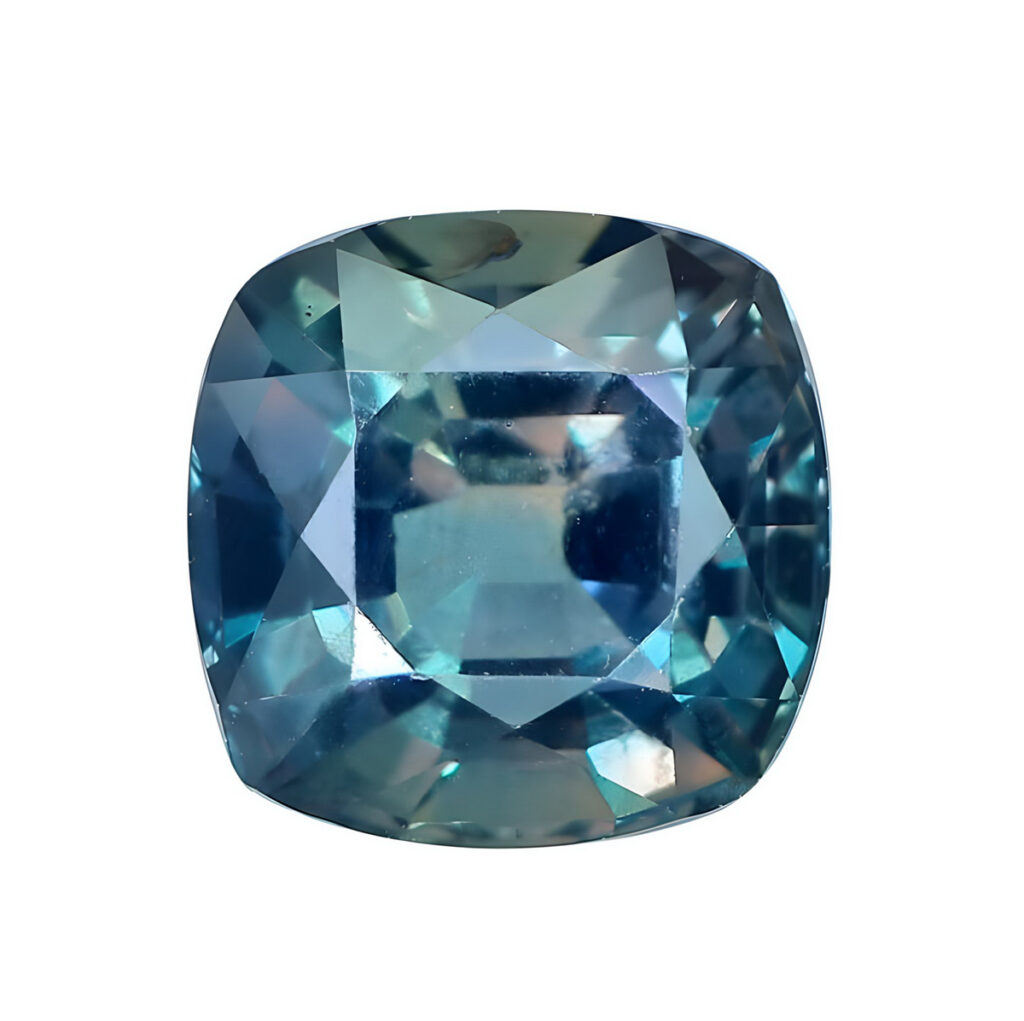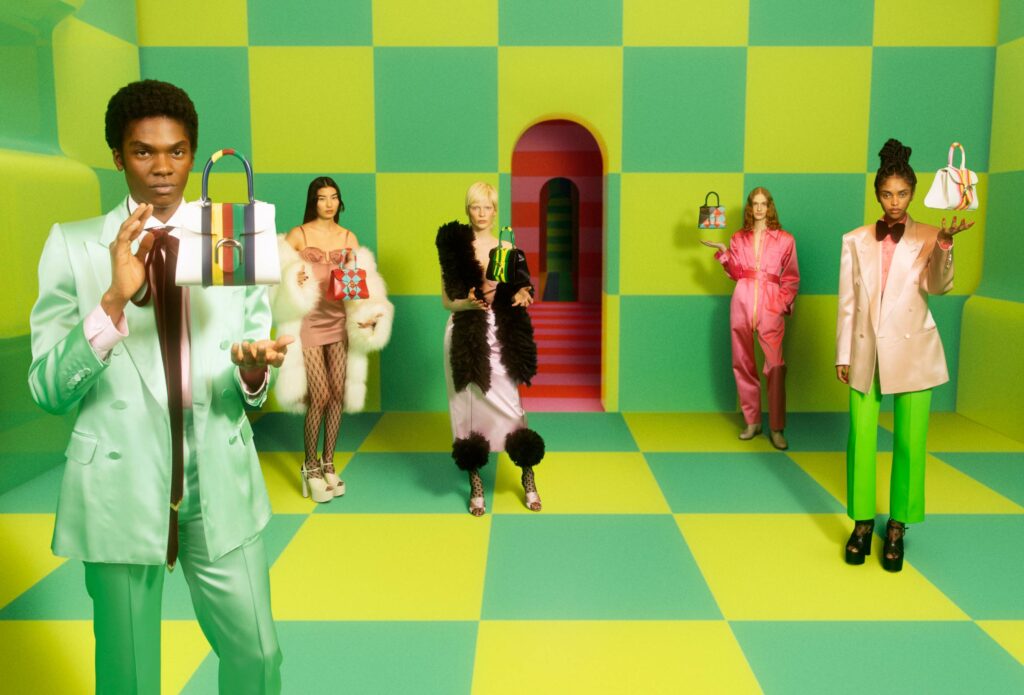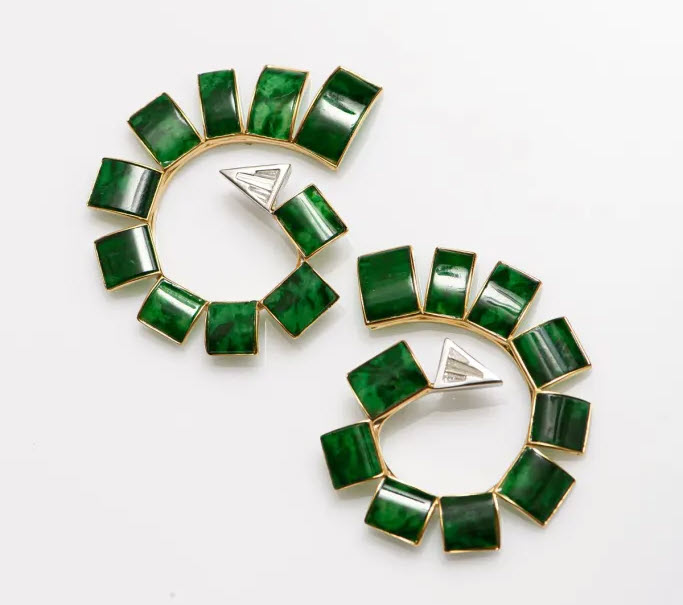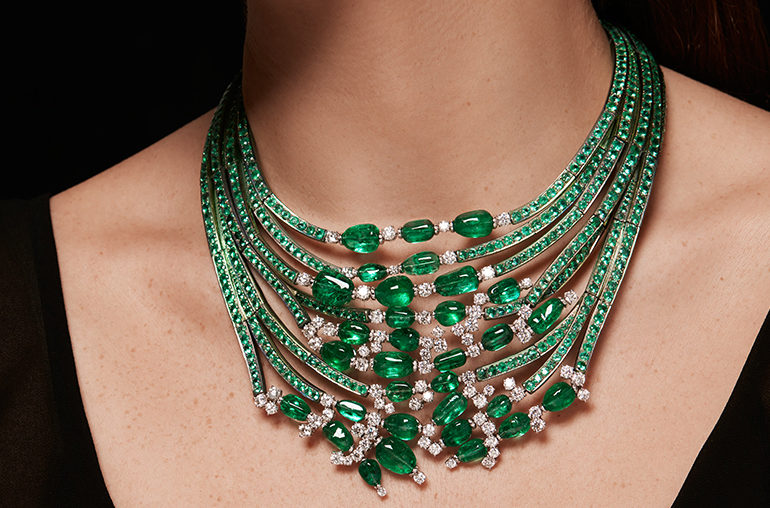
As demand for the green stone flourishes throughout the world, designers are pairing it with everything from diamonds and rubies to turquoise and black pearls.
As springtime comes into full bloom, emerald’s deep, verdant hues perfectly conjure up the month of May. They symbolize growth, new beginnings and vitality. With their rich luster, it’s no wonder numerous cultures revere them. “Emerald is a unique shade of green that is soothing to the eye,” says Arsavir Zarokyan, president of Cicada Jewelry. “The depth of color in a clean, untreated emerald is unmatched.” It is common knowledge that the most coveted specimens originate in Colombia’s historic Muzo mines, which yield stones with bluish undertones and vivid color. Exceptional qualities have also come from Afghanistan, Pakistan, Brazil, Ethiopia and Zambia, with Africa increasingly becoming an important source for this precious green gem.
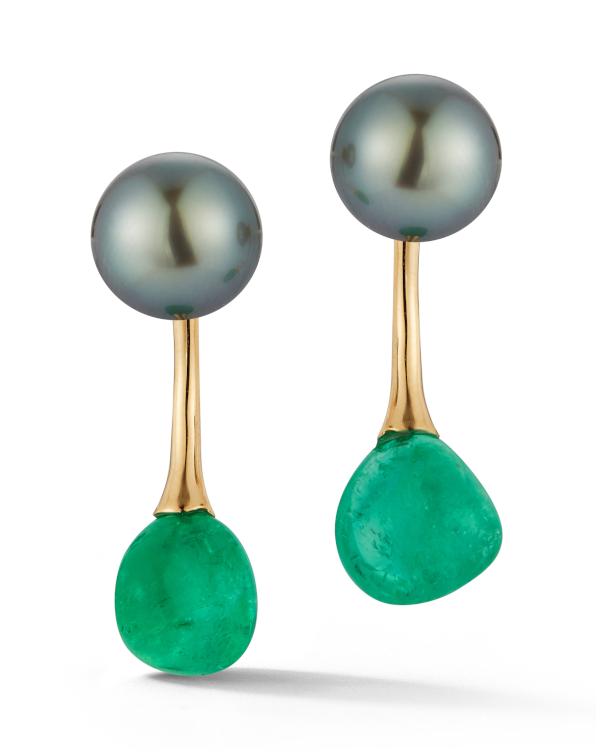
Winning combinations
Designers have harnessed emeralds’ ravishing color to construct bold and striking combinations. Fawaz Gruosi’s eponymous brand challenges the conventional perceptions of emerald designs by matching them with turquoise, purple sapphires, pink opal and opulent rubies. Of the pieces in his Memories, Unexpected high-jewelry collection, 65% boast exceptional Colombian, Zambian and Brazilian emeralds. Cut into voluminous cabochons, the green gems create a sumptuous contrast with rubies in these jewels. The line’s Green and White Gala suite is also an example of disruption and mastery, juxtaposing step cuts with graduated round brilliants. Colombian emeralds lie on beds of additional emeralds and diamonds for an unabashedly glamorous look. Colorless diamonds are a common pairing for emeralds, but designers also go for high contrast with striking combinations of green and black, using black diamonds, onyx, black jade, Tahitian pearls and dark ceramic settings. “Black enhances the color of the emerald, while also making it more everyday and wearable,” observes Zarokyan, who uses mainly Colombian emeralds in his jewelry. Nilufer Kizilkaya agrees. “Emeralds have such an alluring and striking hue, and the black setting really enables them to take center stage,” says the founder of GFG Jewellery. Her Noir collection sets emeralds in 18-karat gold with black rhodium.

Some jewelers have gone right to the source for their looks. Since 2018, Muzo Emerald Colombia’s robust designer collaboration program has been bringing an added freshness to the market, featuring emerald jewelry by some of the most sought-after contemporary creators. “We have been fortunate to work with some of the world’s top jewelry design talent,” says Gabbi Harvey, the mastermind behind these collaborations and head of business development for Muzo. “We love seeing their vision come to life — a true celebration of emeralds that honors our legendary Colombian mine.” In 2020, Muzo Emerald teamed up with US-based designer Katherine Jetter, whose flair for clean lines and sensitivity to color comes through in her distinct pairing of emeralds with black Tahitian pearls. Elegantly strung together, the tumbled emeralds and iridescent pearls elevate the green-and-black combination to new heights.
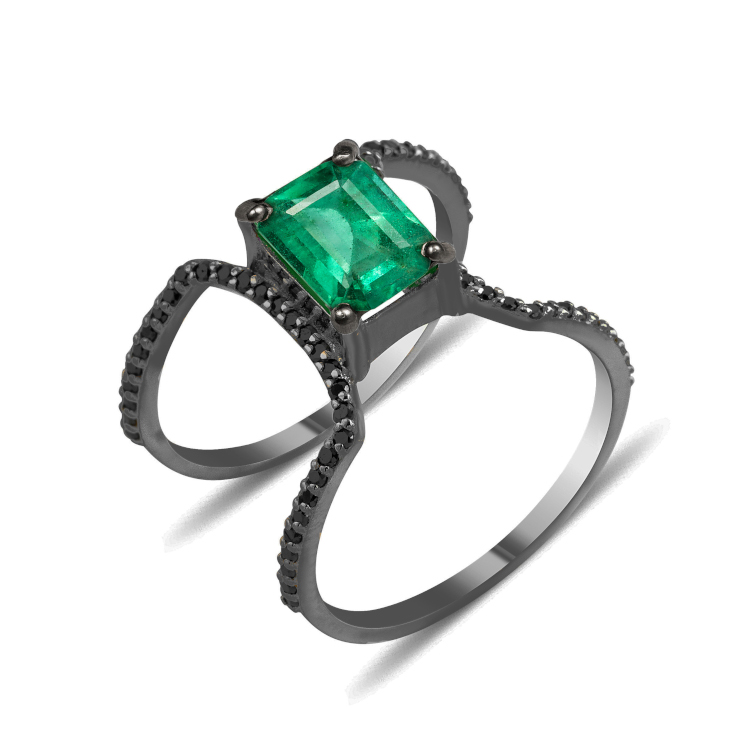
Getting fancy with shapes
Traders have witnessed a general shift toward unusual cuts and geometric shapes in modern jewelry design. Zoe Michelou, owner of Thailand-based supplier Imperial Colors, has seen increasing demand for hexagonal, kite and shield cuts in the US, Singapore and Canada. “Since you’re not following the natural shape of the crystal, these become harder to cut, so you lose a lot more weight. Prices for these shapes tend to be more expensive,” she says. While the European market still prefers conventional step cuts for its emeralds, she adds, “that’s slowly changing, and we will see them opting for alternative shapes in the future.” Gem specialist Dharmendra Tank of Tank Fine Gems also cites an increasing appetite for fancy-shaped emeralds. “Jewelers want to match their fancy-cut diamonds with half-moon, lozenge and portrait cuts, as well as modified step cuts with an open culet to add an old-style charm to their emeralds.” At the same time, he says, others prefer the natural, organic curves of tumbled stones. Emeralds feature extensively in GFG Jewellery, which uses a variety of cuts throughout its collections. “We haven’t found a demand for specific cuts — more so unique designs,” says Kizilkaya. “We are currently working on a new collection with princess-cut emeralds.”
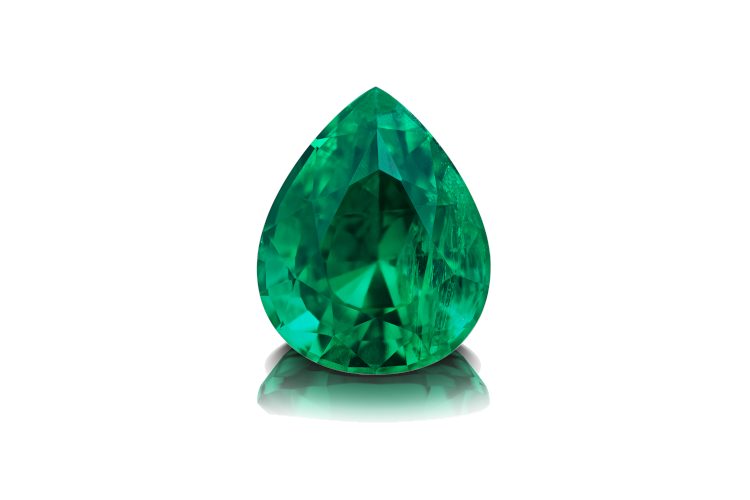
Jewelers are finding new ways to set conventional shapes such as pears. Brands like Katkim and Grace Lee irregularly arrange, tilt or invert pear shapes in simple linear frames, adding a nontraditional twist to the emerald engagement ring. For Karina Choudhrie of K&Co., step cuts and oval cuts are more favorable for necklace layouts, whereas single cabochons with great luster and lighter colors work well in rings. Calibrated emeralds continue to be a popular choice for jewelers as well. Given the high prices for larger single stones, Michelou has noted an uptick in demand for calibrated sizes. “Jewelers are looking for 1.50- to 3-carat sizes instead and prefer minor- to no-oil goods. For untreated no-oil, they would go for 1 carat, since they are almost unattainable in larger sizes.”
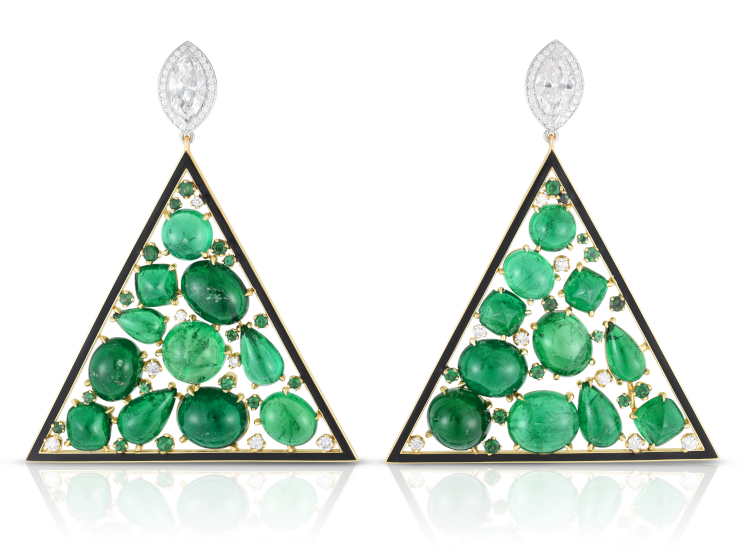
The Indian angle
Carved emeralds are a traditional hallmark of Indian jewels and have always been desirable in high-jewelry brands. Now, independent designers are increasingly using them in their creations. There’s strong demand in the Indian market for low-grade to commercial Russian emerald beads and drops, according to Tank, who notes that prices for such goods have skyrocketed in the last two years. “Russian emeralds have a similar color to Colombian material, and have been popular [in] traditional Indian jewelry, as it gives an old, antique feel,” he explains. Indian designers like Hanut Singh, Arunashi, Viren Bhagat and Vak Jewels are working with carved emeralds in evocative and eclectic ways, offering modern reinterpretations of the Mughal fascination with these stones. Combining classical Indian touches with a modern design sensibility, Singh likes to keep his pieces architectural and linear, with carved emerald orbs and floral motifs that add texture to his creations. Choudhrie — who sources her emeralds from the Indian gem hub of Jaipur, as well as New York, Colombia, and Brazil — taps into the astrology of gemstones to create contemporary keepsakes. “The stars and planets have always been one of my greatest sources of inspiration, and their nature inspires my setting styles. In India, emeralds are believed to promote a sense of physical and spiritual balance. Therefore, a good-quality emerald worn on its own is important.”

Sources and prices
Colored-gem dealers have reported an upward trend in medium- to fine-quality emeralds from all origins. Specimens from Colombia fetch the highest prices, followed by those from Zambia, Afghanistan, Russia, Ethiopia and Brazil, though prices fluctuate based on quality. “Prices are almost parallel between Colombian, Russian and Afghanistan emeralds,” says Tank. “Brazilian emeralds tend to be less expensive, and Pakistan produces smaller sizes, [so it’s hard] to compare. Traders often find Zambian material slightly more expensive in the commercial grades.” Michelou has found that commercial qualities for Colombian material range from $500 to $2,500 per carat. High commercial qualities are approximately $3,000 to $5,000 per carat, and fine-quality goes for $8,000 to $10,000. “Fine emeralds at 5 carats and above are difficult to source, so prices may range between $30,000 and $50,000 per carat,” she adds. “Exceptionally fine and rare material above 10 carats has fetched record-breaking prices at auction, between $100,000 and $200,000 per carat.”
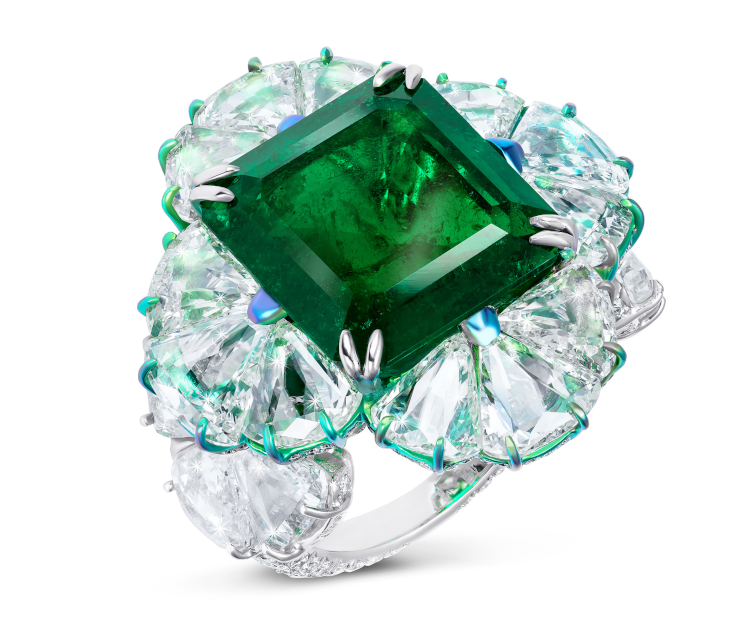
Meanwhile, prices for Zambian material are on an upswing due to limited supply. “Commercial-quality Zambian emeralds range between $250 and $1,000 per carat, and medium commercial-quality [goods are] $1,500 to $3,000 per carat,” Michelou continues. “High-end goods are $4,000 to $6,000 per carat, and extremely fine material is at $8,000 per carat. Rare examples may start from $12,000 per carat. Prices for Brazilian emeralds are approximately 15% lower than Zambian material, since they are more yellowish, have a lower luster and tend to contain more inclusions than stones from other sources. While Colombian has long been a desirable descriptor for emeralds on the auction circuit, auction houses have begun diversifying into other origins. Phillips Hong Kong curated a sale of “region-specific” colored gemstones in 2021, with a Zambian-emerald and diamond pendant necklace selling for HKD 8.1 million (just over $1 million). The piece set a world auction record, achieving the highest price for a Zambian emerald at $24,334 per carat. Afghanistan emeralds from the Panjshir region have also taken the spotlight. An exceptionally pure, 10.11-carat Afghan emerald set another world record at Christie’s Hong Kong in December 2015, fetching $225,000 per carat. Goods from the Middle Eastern country “come in a wider range of sizes, and their beauty can be compared to the Colombian Muzo specimens,” comments Michelou. Commercial Afghan emeralds can range from $800 to $2,000 per carat, she adds, while attractive material usually commands $5,000 to $7,000 per carat.

A verdant future
Michelou foresees solid growth in emerald demand for 2022, especially in the Asian markets. Chinese buyers have a strong penchant for intense green, as it recalls the color of jadeite. “The demand in China is very strong, so prices for all emeralds have been skyrocketing,” she says, adding that approximately 80% of emeralds are exported to China. The high demand also means dealers are having difficulty acquiring Colombian goods, which have the rich green hue that Chinese buyers seek. Given the notable price escalation for emeralds in saturated colors, Tank has found that jewelers are turning toward paler, more understated shades. Buyers are also becoming less tolerant of inclusions. “People want super-clean stones now, which is very tough to source, especially those from Afghanistan,” he says. “Previously, certain inclusions were considered acceptable, [but] the level of quality control has gone up.” Michelou’s predictions for the emerald market’s future include a rise in sales through online gemstone platforms, and a greater emphasis on traceability. “With all the documentation — from the mine [to the] laboratory [for treatment, and on to] the market — the stone will be worth more, and so prices will rise.”
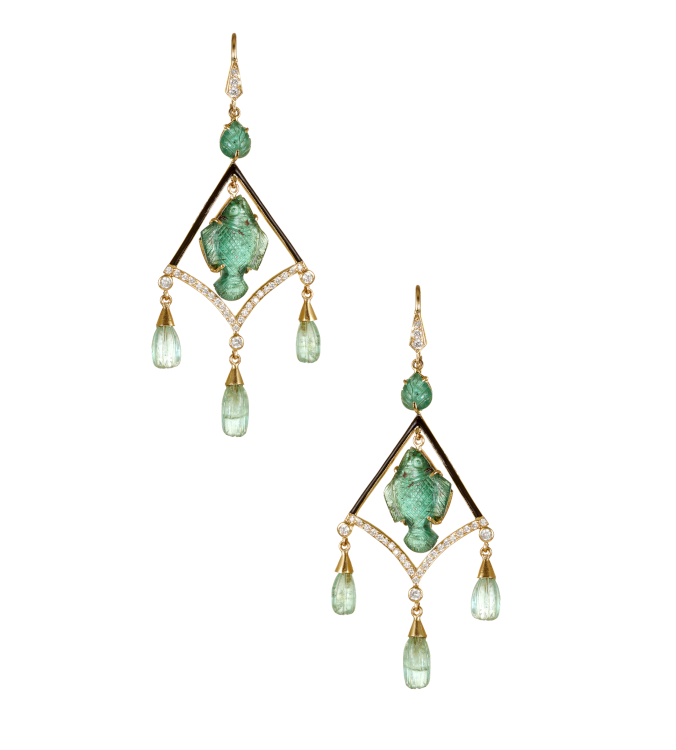
Main image: Fawaz Gruosi Magnificent emerald necklace in white gold and titanium set with 768 emeralds and 205 white diamonds. Photo: Fawaz Gruosi.




